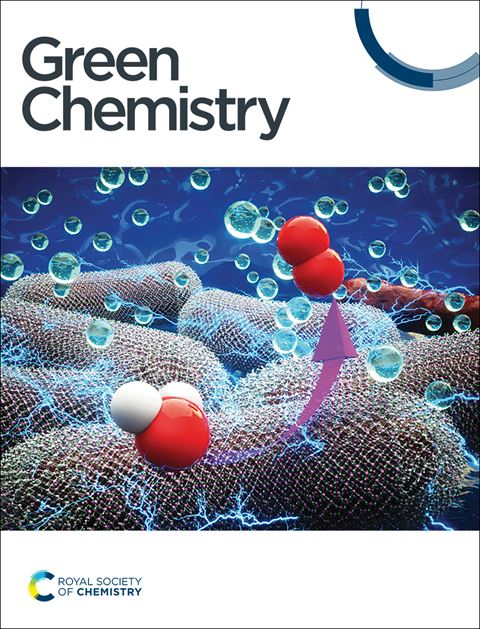水辅助清洁电制备熔盐中的 Co3Fe7:增强的铁磁特性和氢进化率†。
IF 9.3
1区 化学
Q1 CHEMISTRY, MULTIDISCIPLINARY
引用次数: 0
摘要
本文章由计算机程序翻译,如有差异,请以英文原文为准。
Water-assisted clean electro-preparation of Co3Fe7 in molten salts: its enhanced ferromagnetic properties and hydrogen evolution rate†
A clean and efficient method for synthesizing intermetallic Co3Fe7 is reported, based on water-assisted molten salt electrolysis employing the CoFe2O4 electrode, fabricated through the thermo-mechanochemical treatment of iron and cobalt oxides. The electrolysis is conducted at a cell voltage of 1.5 V, achieving an energy consumption of 1.47 kW h kg−1. Upon formation, the synthesized Co3Fe7 serves as an electrode for catalytic hydrogen production, demonstrating a current density of 91.7 mA cm−2. These performances are compared with those of electrolytic Fe (1.49 kW h kg−1 and 96.4 mA cm−2) and electrolytic Co (1.30 kW h kg−1 and 40.8 mA cm−2), both prepared under the same electrolysis potential but with different current–time profiles. The electrolytic Co3Fe7 exhibits superior ferromagnetic properties, with saturation magnetization, remanent magnetization and coercivity values of 157.0 emu g−1, 4.3 emu g−1 and 48.9 Oe, respectively, surpassing values reported in the literature for Fe–Co alloys. The findings suggest a sustainable approach for the green synthesis of Co3Fe7 with enhanced ferromagnetic properties. Additionally, the electrolytic Fe and Co3Fe7 show promise as electrode materials for molten salt hydrogen production.
求助全文
通过发布文献求助,成功后即可免费获取论文全文。
去求助
来源期刊

Green Chemistry
化学-化学综合
CiteScore
16.10
自引率
7.10%
发文量
677
审稿时长
1.4 months
期刊介绍:
Green Chemistry is a journal that provides a unique forum for the publication of innovative research on the development of alternative green and sustainable technologies. The scope of Green Chemistry is based on the definition proposed by Anastas and Warner (Green Chemistry: Theory and Practice, P T Anastas and J C Warner, Oxford University Press, Oxford, 1998), which defines green chemistry as the utilisation of a set of principles that reduces or eliminates the use or generation of hazardous substances in the design, manufacture and application of chemical products. Green Chemistry aims to reduce the environmental impact of the chemical enterprise by developing a technology base that is inherently non-toxic to living things and the environment. The journal welcomes submissions on all aspects of research relating to this endeavor and publishes original and significant cutting-edge research that is likely to be of wide general appeal. For a work to be published, it must present a significant advance in green chemistry, including a comparison with existing methods and a demonstration of advantages over those methods.
 求助内容:
求助内容: 应助结果提醒方式:
应助结果提醒方式:


